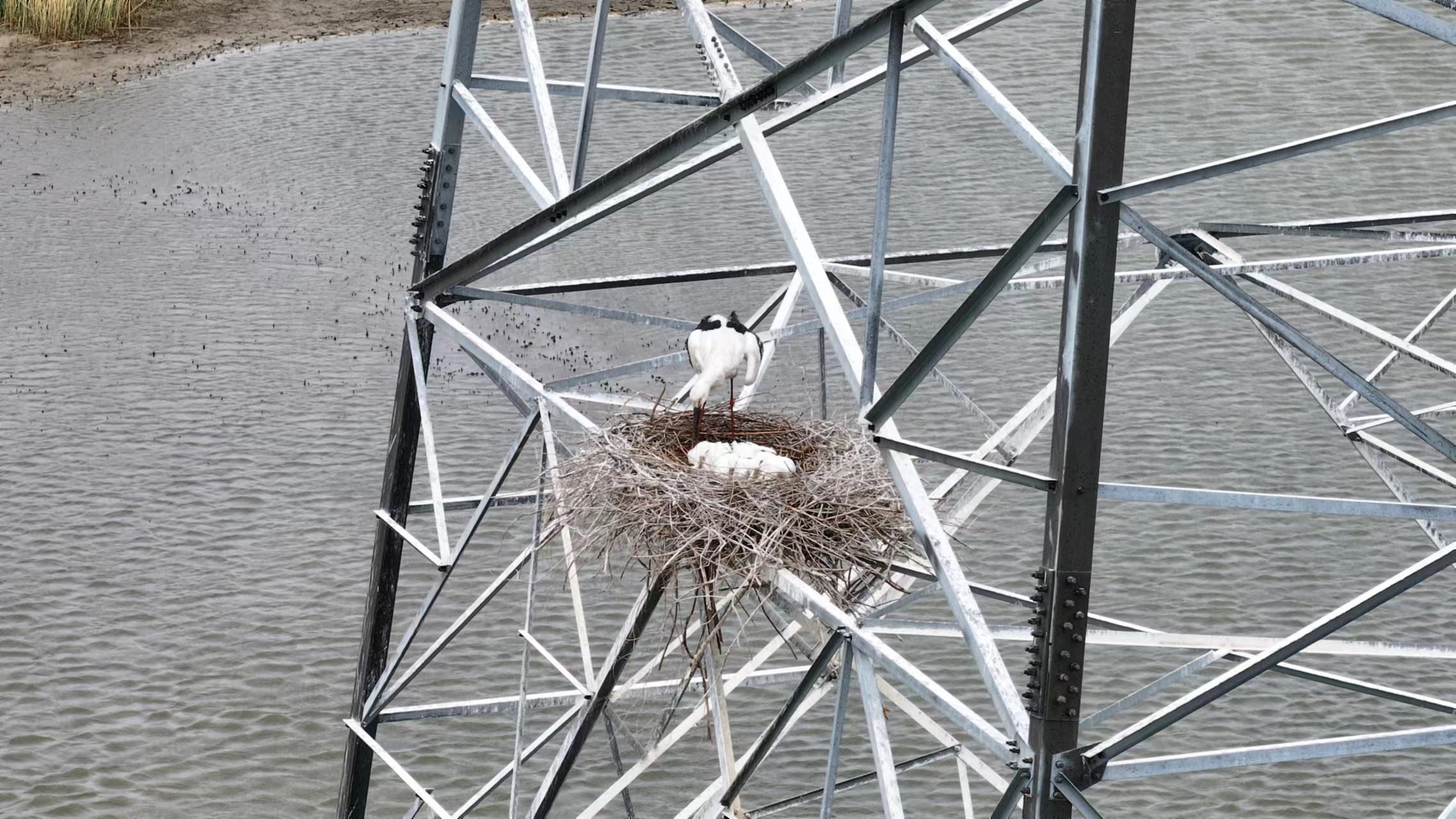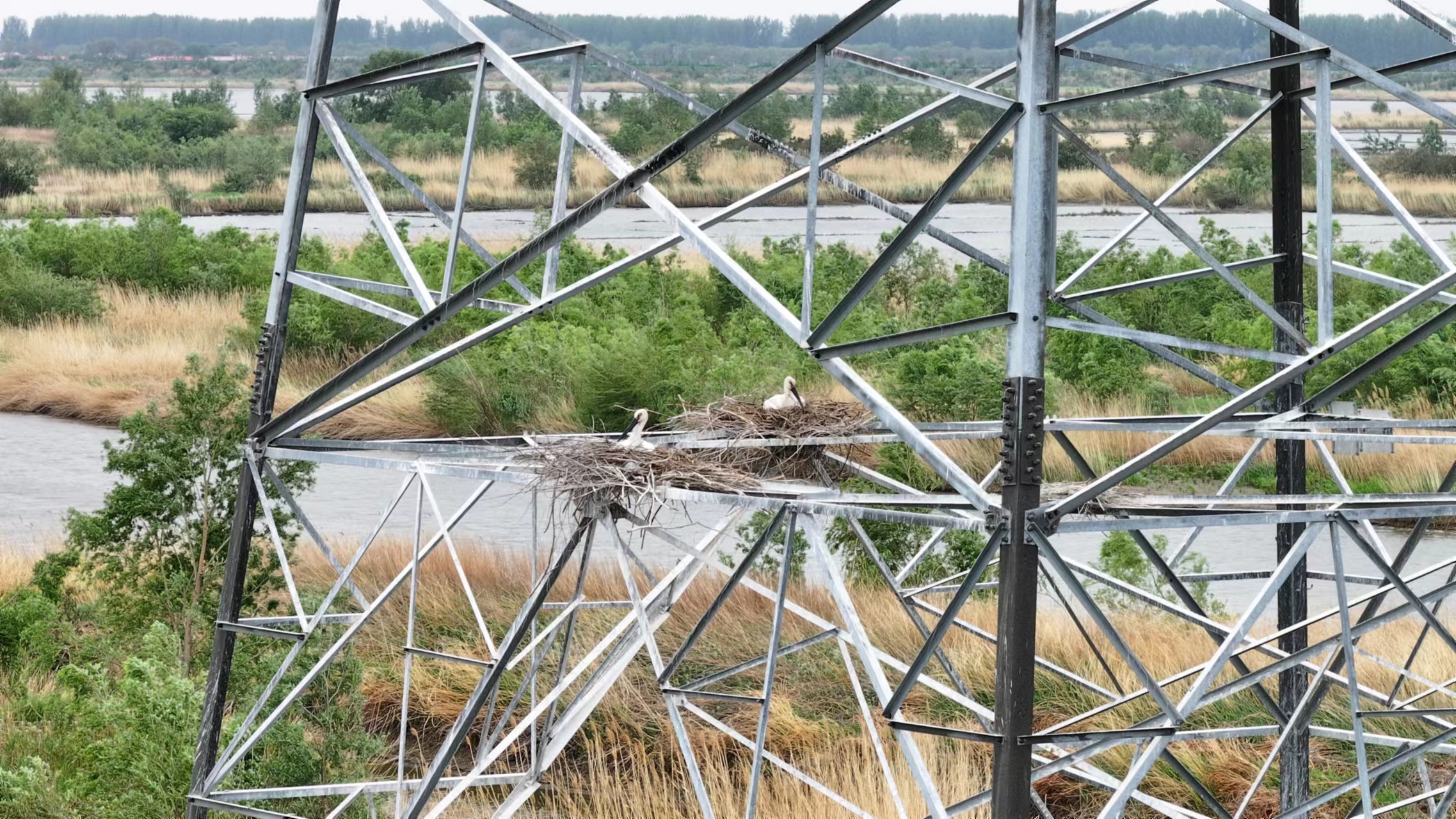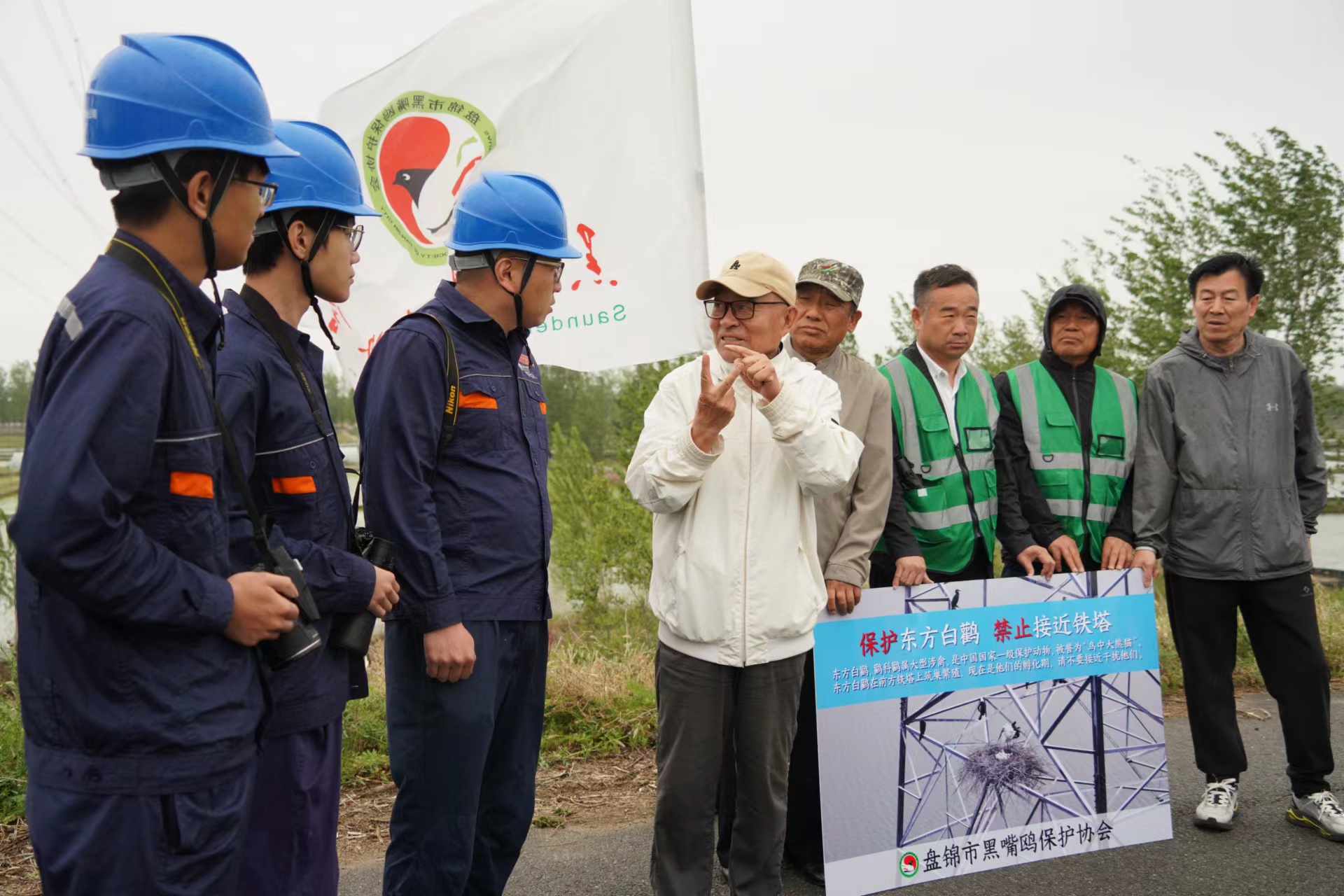Endangered Oriental storks nesting on pylons receive good care in Panjin, NE China's Liaoning
Instead of using drones as they usually do, power transmission line operation and maintenance workers from a power supply company in Panjin city, northeast China's Liaoning Province, recently inspected power lines at a pylon located in a river channel with a pair of binoculars.
"It's currently the breeding season for Oriental storks. The noise from drones might disturb them, so during this period, we're using high-powered binoculars and telephoto cameras to check power grid conditions," explained a worker.

(Photo provided to People’s Daily Online)
Through the lens, a large nest could be seen in the middle of the tall iron tower, where an Oriental stork, an endangered bird species under first-class national protection in China, was tending to four chicks.
Panjin, which has been recognized by the Ramsar Convention as an international wetland city, is located on the East Asian-West Pacific flyway, one of the world's nine major bird migration routes. It serves as an important stopover site and destination for migratory birds in East Asia and Australasia, and is also a key area in China's migratory bird flyway protection network.

(Photo provided to People’s Daily Online)
Over 300 bird species inhabit Panjin, each with unique habits. Oriental storks in particular often nest on power transmission towers, making it a necessity for the city to balance the safe operation of the power grid and the normal activities of birds.
State Grid Panjin Power Supply Co., Ltd., a subsidiary of the State Grid Corporation of China in Panjin, has made continuous efforts to achieve the goal over the years.

(Photo provided to People’s Daily Online)
The company has kept recording information about power lines and areas of power facilities where wildlife is often spotted, and created an "ecological power grid map" covering Panjin's entire 2,400-kilometer power transmission lines and nearly 7,400 pylons.
It has also formulated an eco-friendly inspection plan that specifies inspection priorities for bird-inhabited power lines, no-fly zones for drones, and locations for digital inspection and monitoring devices, quietly safeguarding rare bird species through practical actions.
Photos
Related Stories
Copyright © 2024 People's Daily Online. All Rights Reserved.









